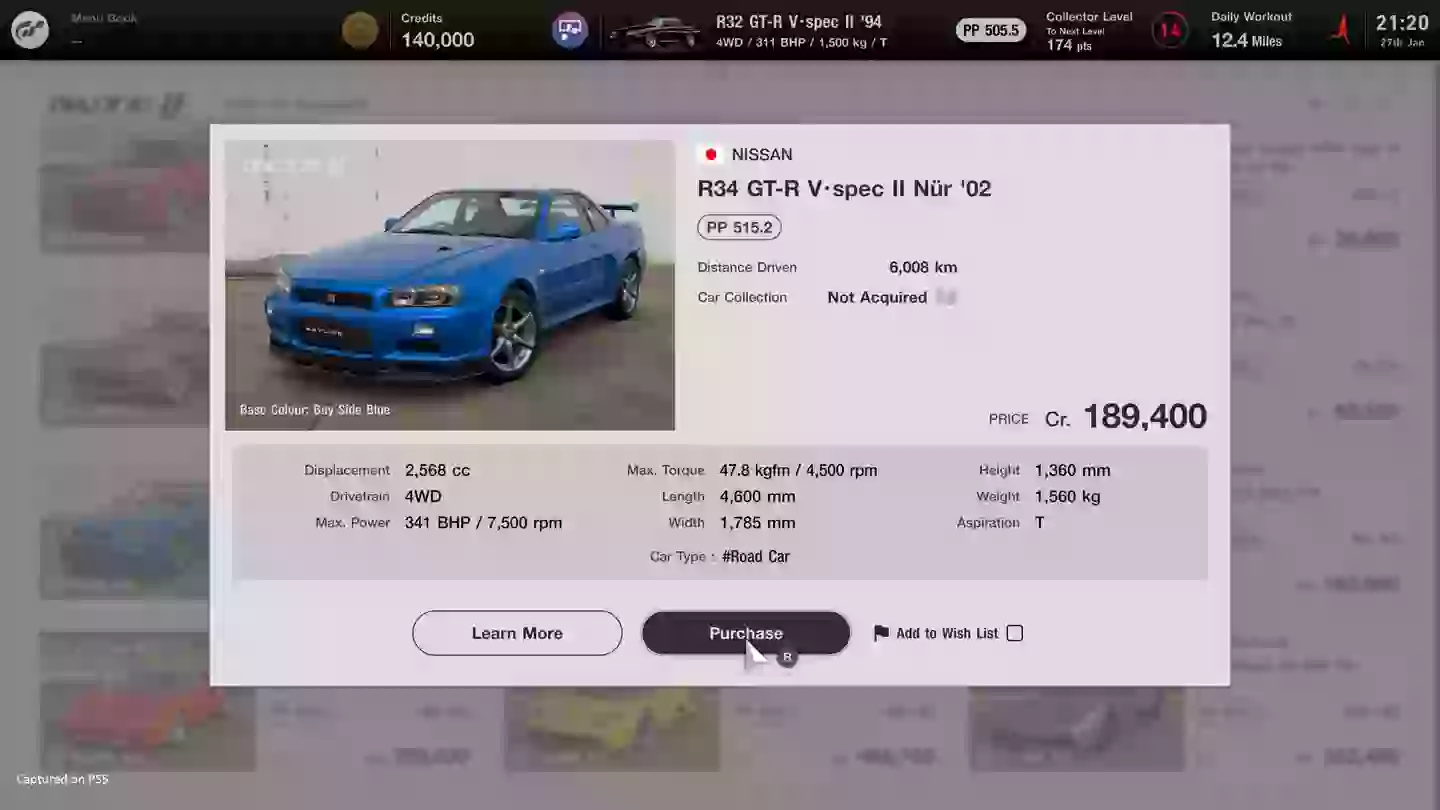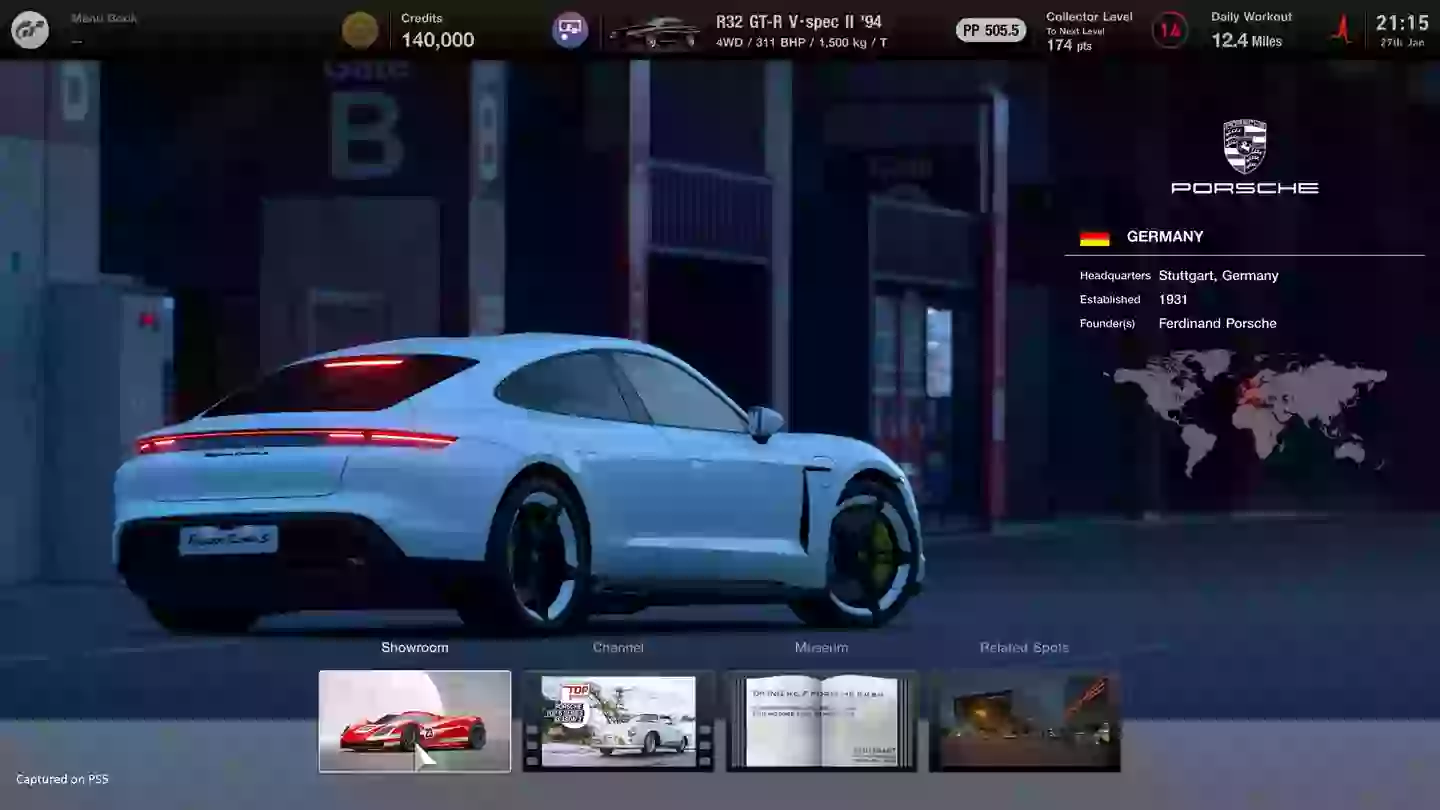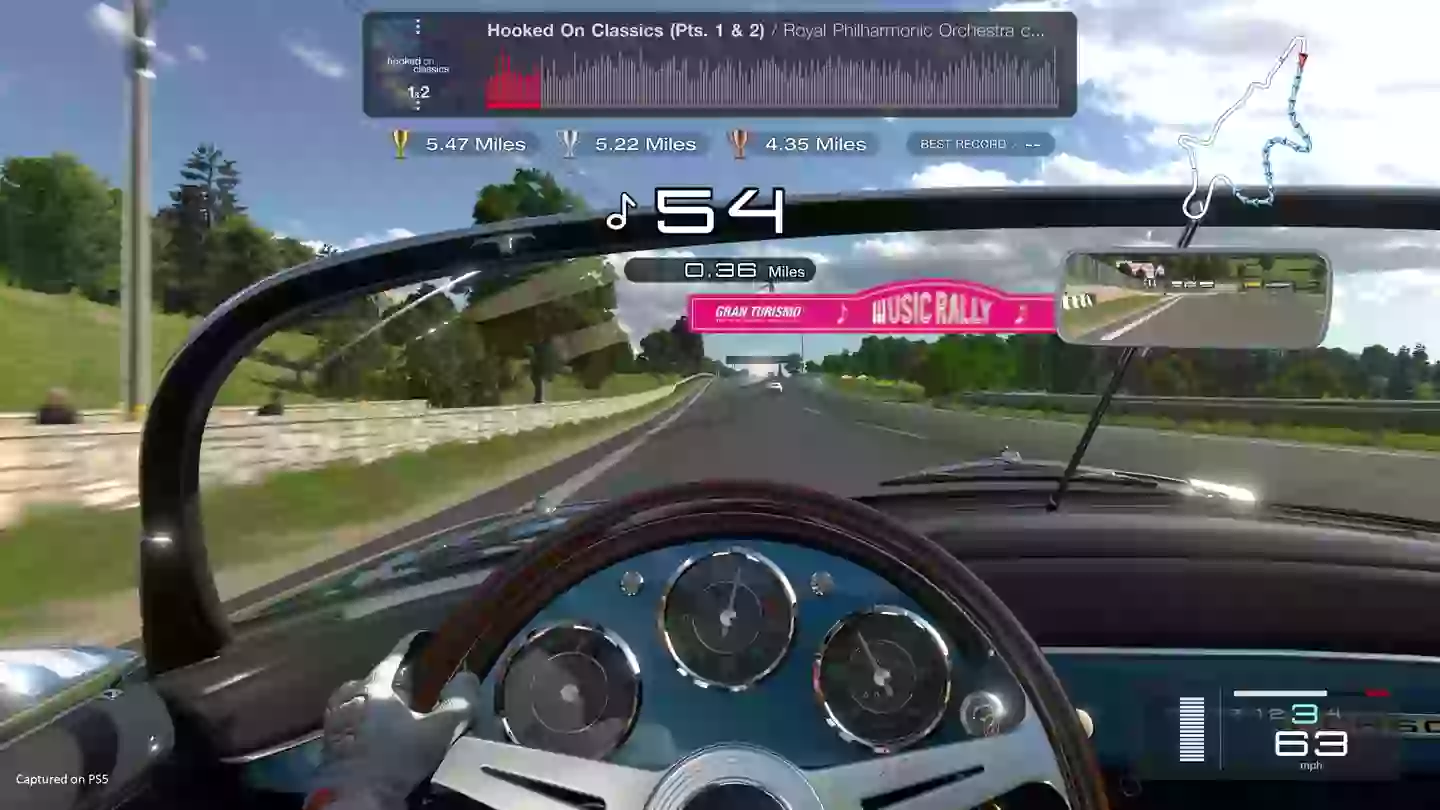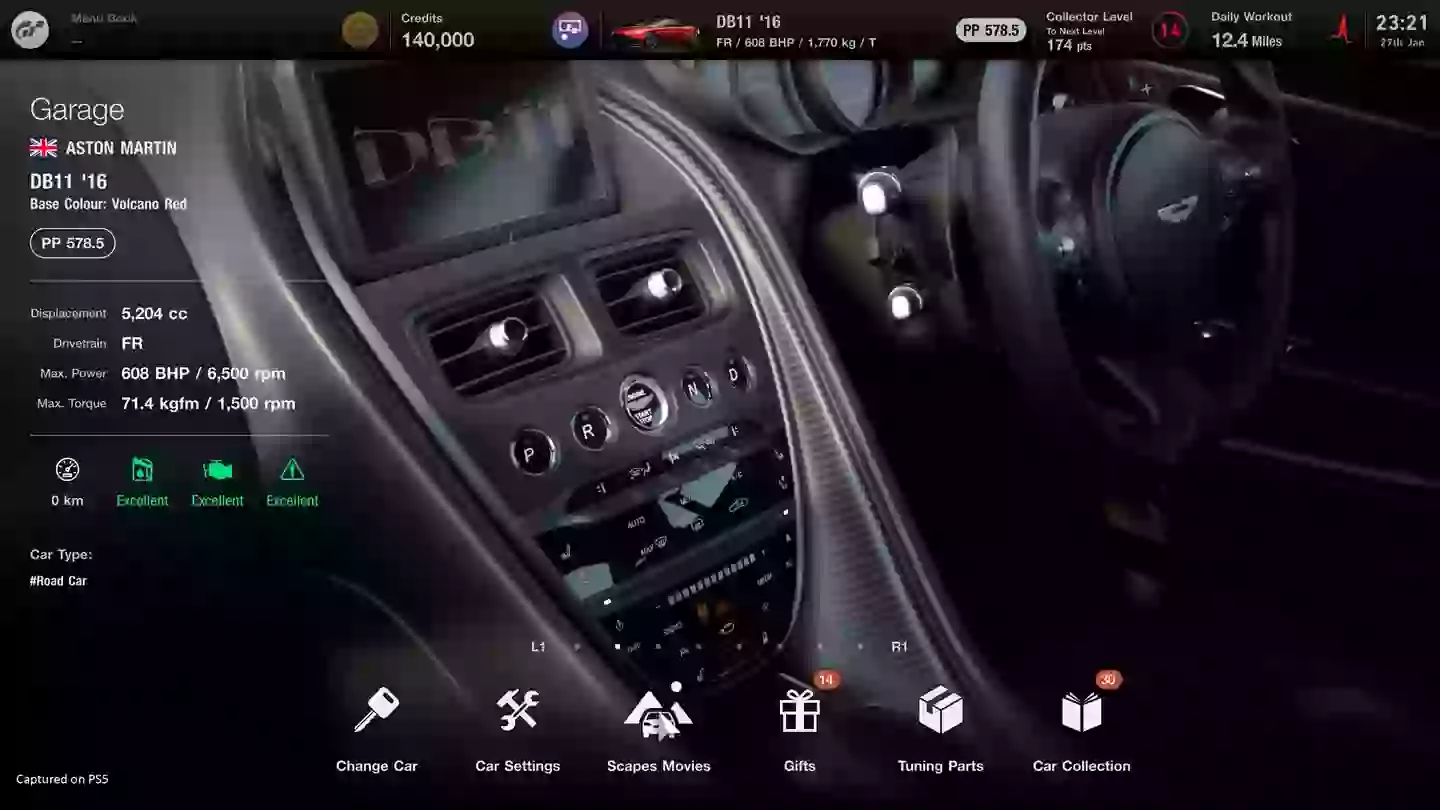
Gran Turismo. A name synonymous with the PlayStation brand, and one almost as universally recognised. The small matter of it being 25 years since the first game was released is something that the more seasoned players among you might want to take a moment to ponder. Bafflingly, yes, that is correct - it’s been 25 years since the original Gran Turismo arrived. Excuse me while I fade to dust.
Originally released as Gran Turismo: The Real Driving Experience here in Europe and in Japan, developers Polyphony Digital and the series’ enigmatic producer Kazunori Yamauchi have been a staple of the PlayStation experience with eight games featuring across almost every console generation, including on the often overlooked PlayStation Portable.
Check out the trailer for Gran Turismo 7.
So here we arrive at the next stop along our journey. Gran Turismo 7. The media briefing we were invited to by Sony opens with Yamauchi-san standing in a virtual garage, flanked by virtual supercars as he introduces the game. It’s no secret that the last iteration of the franchise, 2017’s Gran Turismo Sport for PlayStation 4, left many drivers dejected. Its focus on a more hardcore fanbase and online facing felt like a negative tonal shift from the series’ accessible roots. With sales around the 8 million mark (compared to nearly 15 million units sold at its peak for the PS2’s excellent Gran Turismo 3: A-Spec), PlayStation’s flagship racer found itself way off the pace. Indeed with the surging popularity of competitors like Forza, it was no longer the fastest car on the track.
With that in mind, it’s perhaps little wonder that the tone of the briefing was very much one of reconciliation, of taking the series back to its roots. A focus on driving cars quickly and accurately at the core of the game. Putting tyres back on the asphalt as opposed to boots on the ground, as it were.
In his opening thoughts, Kazunori laments that you “won’t find as many people talking about car culture any more” and that “less people are talking about the beauty of cars, or focused on the fun of driving”. Gran Turismo 7 has been created with these facts in mind. It is being dubbed as ‘the best of Gran Turismo through the ages’ and aims to once again be the opiate of the casual and hardcore driving masses.
So what’s new? Well, initially it’s more a case of what’s old. GT7 is bringing back the hub world that veterans of the franchise will recognise, though this one looks like a weird metaverse-style map. Contained within are the familiar car dealerships offering over 400 cars from past and present. While we weren’t told specifically which cars (that would take an awfully long time) we do know that players will once again be able to start at the bottom by buying a low-budget banger, and race against AI opponents for rewards, licenses and eventually better cars in the career mode. It’s the way the driving gods intended it, and it’s damn good to hear that that gameplay loop is back with a vengeance.

The tracks you’ll be racing on are a usual blend of old and new, real and fantasy, numbering 34 in all with some 90 layouts within them. Factor in day and night cycles and weather effects, and you’re starting to build yourself quite a pretty race day picture. The climate system promises dynamic changes in time and weather, meaning that tracks will get wet when it rains (obviously) but will dry quicker in certain spots depending on where the sun hits, where tyres are travelling more frequently, where there’s bumps and raised spots on the road and so on. Road surface temperature will also change the physics of the cars making them handle much more realistically than ever before. Gran Turismo has always been billed as the ultimate racing simulation, but that level of attention to detail feels truly next generational.
If we’re talking pure aesthetics, Gran Turismo has historically been known for its weepingly beautiful graphics, and it looks like Gran Turismo 7 is gunning to continue that proud lineage. There are two graphics modes available on the PlayStation 5 - Frame Rate mode and Ray Tracing mode. Both will do pretty much exactly what they say on the tin. FR mode prioritises steady frame rates (running at 60fps) while RT mode will be used more for replays and the game’s photo mode where player inputs aren’t essential. The preview we saw did show a side-by-side comparison of the two, but I’d be lying if I told you that there was a striking difference between them to the untrained eye.

What’s perhaps more intriguing, is the game’s heavy focus on sound design as much as its graphical fidelity. Gran Turismo 7 incorporates truly 3D audio, with a painstaking attention to detail in not only how the cars sound, but in how that sound interacts with its environment. That sounds a little bizarre, I’ll admit, so here’s an example.
Say you’re driving round a track in a shiny new Lamborghini. You’ve got your headphones on and are enjoying what it sounds like to be sat inside a Lamborghini screaming round a corner, tires wailing, engine purring, chassis straining. All good. Previously, that level of audio would have been enough to enrapture car enthusiasts and have them say, ‘yes, I feel like I am in the car doing the thing’. But for Kazunori, that isn’t enough. The extra level of detail being unveiled here is that the ambient sound, the stuff happening outside the immediate car, is now as important as the vehicle itself. What does that Lamborghini sound like if you’re driving past a wooden fence or a concrete wall? What does that tire squeal sound like bouncing off the wall and how would the driver hear that? Truly, reader, I can tell you that I don’t know the answer. But Yamauchi-san does, and he’s hoping that answer will resonate (hah) with the Gran Turismo audience.
Sony’s poster child controller, the DualSense, is also finally getting some love from its first-party games. The locational vibration systems seem perfectly suited to driving around a track where typically you’d be able to feel the car and road beneath you. Going over bumps under your front left wheel, you’ll be able to feel that nearer to your left index fingers gripping the pad. Different cars will have differing amounts of give on the shoulder buttons depending on their real life counterparts’ accelerator and brake pedals. All in all, it sounds like this game was made to showcase the power of the DualSense, and it’ll be exciting to see just how far down the road Polyphony have gone with it.
With sound at the core of the Gran Turismo 7 experience, it would be remiss not to mention the game’s stellar musical roots. Hip-hop, rock, jazz, classical and lounge music all have a home within the hallowed halls of GT. This time there will be over 300 songs by 75 artists, including metalcore darlings Bring Me The Horizon, who will be thrashing out a cover of ‘Moon Over The Castle’ - the main theme of Gran Turismo 4 - for the game.

Why is the music so important? Well, because there are two new modes based uniquely around it. Music Replay will set your replay, surprisingly enough, to music, as opposed to the fixed camera angles like we’re used to. In theory, this means that the replays will be dynamic and different every time, depending on which song is playing. Camera angles will change as the beat changes, with the game deciding where to place the camera reckoning on what’s happening in the music. In theory, this sounds super neat and novel - a way to shake up a well-known formula. In practice, the example we were shown looked pretty much exactly like a normal replay with more wonky camera angles. It looks fine, but I don’t really see it being a selling point for the game.
Secondly, there’s Music Rally. A musical spin on a time trial/checkpoint mode, where going through gates extends the song by a certain number of beats, like time in a time trial. The objective of the mode is to “enjoy the music” and get to the end of the song without running out of beats. If you do, you win and everybody goes home happy. While Kazunori seemed particularly enthused by the inclusion of Music Rally mode, it does just feel like something we already know but with extra steps.
The final new inclusion of note is the GT Café. It’s dubbed as a kind of special features section, where players can learn more about the cars they’re driving by performing certain tasks with them around the track. Some of the designers of the cars themselves will even pop by to share memories of their making, which is really cool if you’re into that kind of thing. Clearing the challenges for each car (called a Menu Book) will bring an end to the so-called campaign, but as always there’s more to do online.

Gran Turismo 7 (much like GT Sport) will always be online. This is supposedly to help prevent cheating in online races, protect game saves and so on. But Yamauchi-san didn’t really say why it all needs to be online, even if you’re just knocking about on your own instead of racing other people. Typically there will be the usual online leaderboards and races to challenge your friends with, rounding off the Gran Turismo experience quite nicely.
It sounds like Kazanori and the team at Polyphony are acutely aware of the situation they find themselves in. Diminishing returns require bold moves, especially when Sony really needs to give people more reasons to buy the PlayStation 5. Taking the series back to its roots with a few bells and whistles may well be the saving grace of the historic franchise - the real key will be in how the game is marketed. It needs to be made clear that this is for the everyman and not only the enthusiasts. Whether that lost generation of petrol heads will feel the need for speed once more will be the deciding factor - and if they don’t, maybe now is the time for Gran Turismo to begin driving towards the sunset and not look back.
Gran Turismo 7 will be released on March 4th 2022 for PlayStation 5 and PlayStation 4.
Featured Image Credit: Gran Turismo 7 / Credit: Sony Interactive EntertainmentTopics: Gran Turismo, PlayStation, PlayStation 5, Sony, Preview